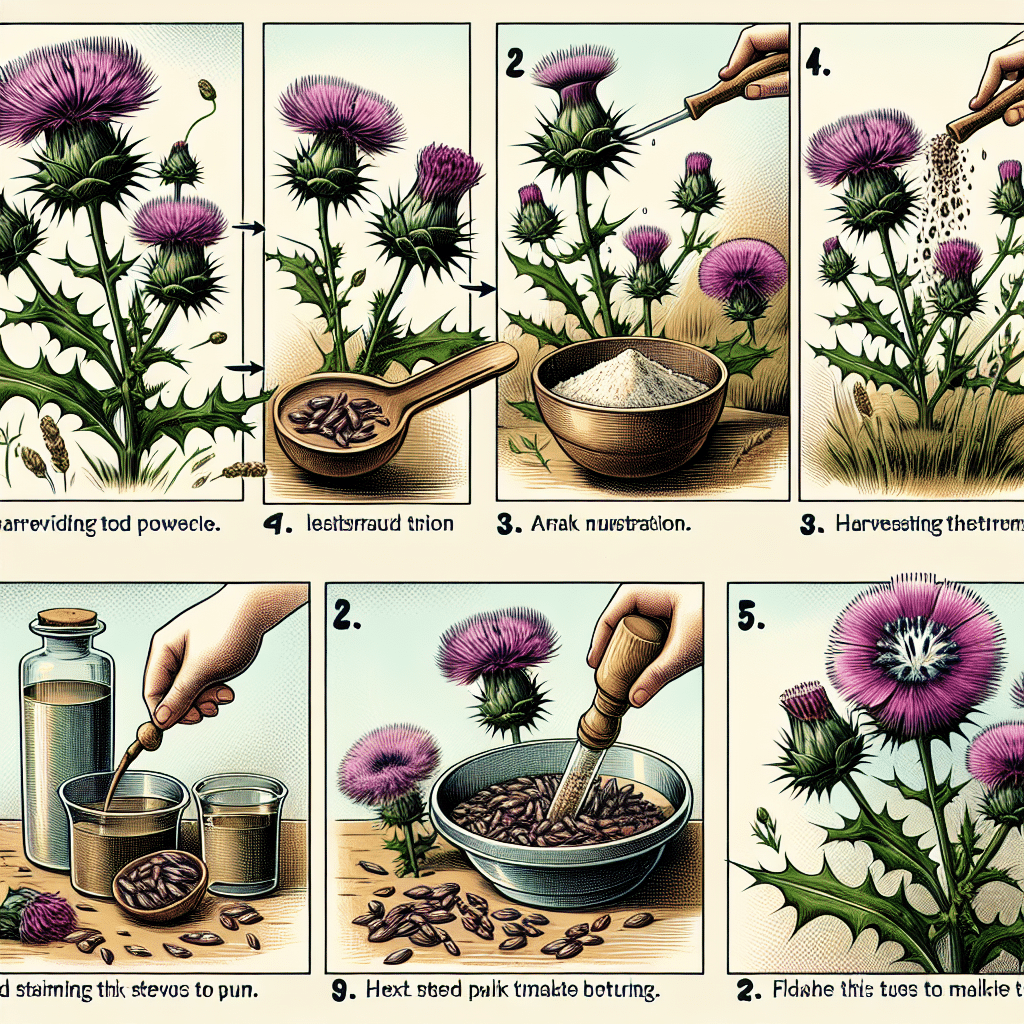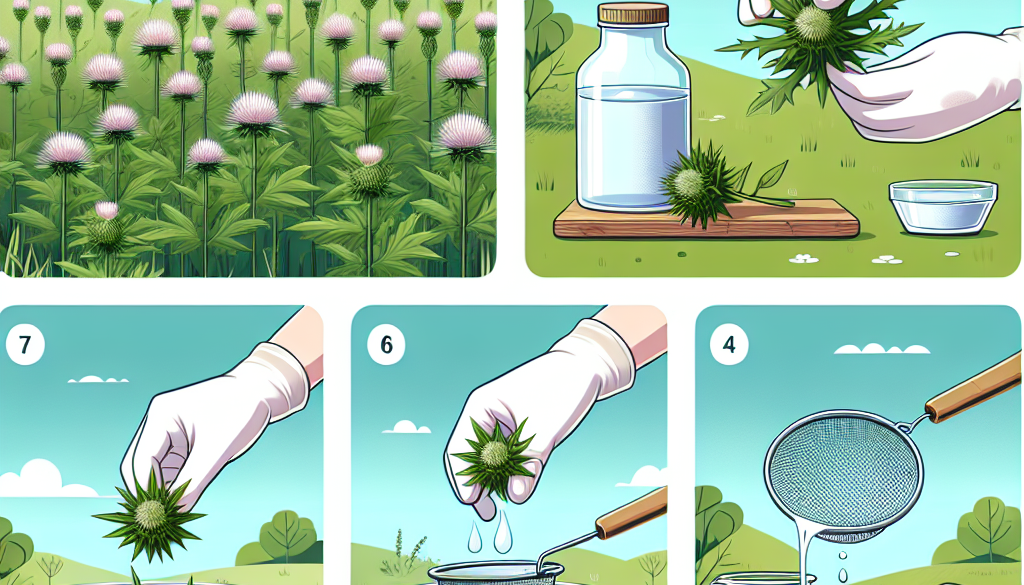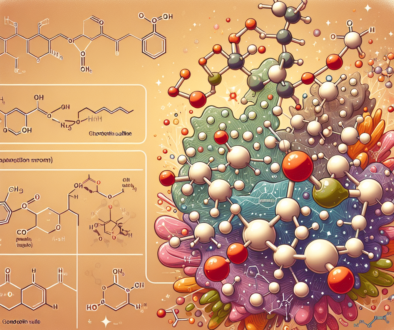How to Extract Milk Thistle: Guide
-
Table of Contents
- Extracting Milk Thistle: A Comprehensive Guide
- Understanding Milk Thistle and Its Benefits
- Harvesting Milk Thistle
- Preparing the Seeds for Extraction
- Choosing the Right Solvent for Extraction
- The Extraction Process
- Refining the Extract
- Quality Control and Testing
- Formulating Milk Thistle Supplements
- Conclusion: Key Takeaways for Extracting Milk Thistle
- Discover ETchem’s Protein Products
Extracting Milk Thistle: A Comprehensive Guide

Milk thistle, scientifically known as Silybum marianum, has been used for centuries as a natural remedy for various health conditions, particularly liver problems. The active component in milk thistle, silymarin, is a group of flavonolignans that are thought to have antioxidant and anti-inflammatory properties. Extracting these beneficial compounds from milk thistle requires a series of steps to ensure the purity and efficacy of the final product. In this guide, we will explore the process of milk thistle extraction, from plant to supplement.
Understanding Milk Thistle and Its Benefits
Milk thistle is a plant native to Mediterranean countries but is now found worldwide. It is easily recognizable by its purple flower and white-veined leaves. The seeds of the milk thistle plant contain the highest concentration of silymarin, which is why they are the primary focus of extraction.
Research suggests that milk thistle may help protect the liver from toxins, promote liver regeneration, and have potential benefits for those with liver diseases such as cirrhosis and hepatitis. Additionally, milk thistle is believed to have anti-cancer properties and may help lower blood sugar levels in people with type 2 diabetes.
Harvesting Milk Thistle
The first step in extracting milk thistle is to harvest the plant at the right time. The best time to harvest milk thistle is when the seeds are fully ripe, which typically occurs between late summer and early fall. The seeds should be dark brown and hard to the touch.
- Inspect the plants regularly as the harvest time approaches.
- Choose a dry day to harvest to reduce the moisture content in the seeds.
- Cut the flower heads and place them in a paper bag to dry further and catch any seeds that fall out.
Preparing the Seeds for Extraction
Once the seeds are harvested, they need to be prepared for extraction. This involves drying and grinding the seeds to increase the surface area for the extraction process.
- Spread the seeds out in a thin layer and allow them to dry completely, which can take several days.
- Once dry, grind the seeds into a fine powder using a coffee grinder or a mortar and pestle.
Choosing the Right Solvent for Extraction
The extraction of silymarin from milk thistle seeds requires a solvent. The most commonly used solvents are alcohol (ethanol) and water, but other solvents like acetone and ethyl acetate can also be used.
- Alcohol extraction is preferred for its efficiency in extracting a wide range of silymarin compounds.
- Water can be used for a more gentle extraction but may not yield as high a concentration of silymarin.
The Extraction Process
There are several methods for extracting silymarin from milk thistle seeds, including maceration, percolation, and ultrasonic-assisted extraction.
- Maceration: Involves soaking the ground seeds in the solvent for an extended period, often several weeks, with occasional stirring.
- Percolation: A faster method where the solvent is passed through the ground seeds repeatedly.
- Ultrasonic-assisted extraction: Uses ultrasonic waves to increase the penetration of the solvent into the plant material, reducing the extraction time.
Refining the Extract
After extraction, the liquid contains both the desired silymarin compounds and other plant materials. The extract must be refined to isolate the silymarin.
- Filter the extract to remove solid particles.
- Evaporate the solvent under reduced pressure to concentrate the silymarin.
- Use additional purification techniques like column chromatography to further purify the extract.
Quality Control and Testing
Quality control is crucial to ensure the safety and efficacy of the milk thistle extract. The extract should be tested for its silymarin content, purity, and the absence of contaminants.
- High-performance liquid chromatography (HPLC) is commonly used to quantify the silymarin content.
- Tests for heavy metals, pesticides, and microbial contamination are also necessary.
Formulating Milk Thistle Supplements
Once the milk thistle extract is purified and tested, it can be formulated into various supplement forms, such as capsules, tablets, or liquid extracts.
- Consider the dosage of silymarin in each supplement form.
- Additional ingredients may be added to enhance absorption or complement the effects of silymarin.
Conclusion: Key Takeaways for Extracting Milk Thistle
Extracting milk thistle is a meticulous process that requires careful attention to detail at every step. From harvesting the seeds at the right time to choosing the appropriate extraction method and ensuring rigorous quality control, each phase is critical to producing a high-quality milk thistle extract. By following this guide, one can obtain a potent and pure silymarin extract that harnesses the full therapeutic potential of milk thistle.
Discover ETchem’s Protein Products
If you’re interested in high-quality protein products, consider exploring ETchem’s offerings. Their range of collagen products, including marine, fish, bovine, chicken, and various types of collagen, are perfect for various applications in the nutraceutical, pharmaceutical, cosmeceutical, and food and beverage industries. With a commitment to quality and customer satisfaction, ETchem is your go-to source for protein needs.
About ETChem:
ETChem, a reputable Chinese Collagen factory manufacturer and supplier, is renowned for producing, stocking, exporting, and delivering the highest quality collagens. They include marine collagen, fish collagen, bovine collagen, chicken collagen, type I collagen, type II collagen and type III collagen etc. Their offerings, characterized by a neutral taste, instant solubility attributes, cater to a diverse range of industries. They serve nutraceutical, pharmaceutical, cosmeceutical, veterinary, as well as food and beverage finished product distributors, traders, and manufacturers across Europe, USA, Canada, Australia, Thailand, Japan, Korea, Brazil, and Chile, among others.
ETChem specialization includes exporting and delivering tailor-made collagen powder and finished collagen nutritional supplements. Their extensive product range covers sectors like Food and Beverage, Sports Nutrition, Weight Management, Dietary Supplements, Health and Wellness Products, ensuring comprehensive solutions to meet all your protein needs.
As a trusted company by leading global food and beverage brands and Fortune 500 companies, ETChem reinforces China’s reputation in the global arena. For more information or to sample their products, please contact them and email karen(at)et-chem.com today.




